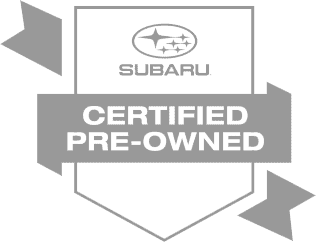
Brake Pad Replacement Service Near Union City, CA
Your brakes have to endure a great deal of pressure and friction to be able to slow the vehicle down when you drive or if you have to stop in an emergency. These essential functions can cause life threatening situations if they fail. If you live in Pleasanton, Mountain View, or Union City, you can have quality brake pad service at Premier Subaru of Fremont. Bring your vehicle in and let us inspect your braking system to ensure that you are safe whenever you drive.
How Brake Pads Work
Nearly all vehicles on the road have a disc brake system on the front end. Some have drum brakes on the rear, but the vast majority of vehicles use a disc braking system on the front and the rear.
When you press the brake pedal, fluid in the brake system creates hydraulic pressure in the brake lines and hoses. This pressure is transferred to a piston in the brake caliper which is mounted to the wheel knuckle that extends around a brake rotor. As the pressure builds, it causes an inboard and outboard brake pad against the flat sides of a rotor.
The brake pads have a friction material affixed to them that grips the metal surface of the rotor applying pressure and friction to slow your vehicle down. The force that is exerted against your brake pads is tremendous, so it is only a matter of time until your brake pads wear out, though it takes tens of thousands of miles to substantially affect your ability to slow or stop depending on the material on your brake pads. Eventually, they will need to be replaced. For most drivers, it's around 20,000 - 40,000 miles before you need to replace your brake pads.
How Long Do Brake Pads Last?
During manufacturing, all brake pads begin with a solid steel baking plate to which the friction material is bonded. For most passenger vehicles, there are three different kinds of materials that make up the friction material on your brake pads.
- Organic or non-metallic brake pads: Generally, these have a blend of synthetic materials like aramid, sintered glass, or cellulose among other compounds in different quantities. These are quiet and soft, so they do less damage to your rotors, but they also have shorter lifespans.
- Semi-metallic brake pads: these pads are composed of metals like iron, steel and copper mixed with non-metallic compounds like graphite. They do last longer, but they are noisy, and they create more wear on your rotors.
- Ceramic Brake Pads: Finally, these are what most people consider to be the best because they combine elements like porcelain and clay with copper fibers for quieter braking, longer life, and they are easier on the rotors.
How to Know When Brake Pads Need to Be Replaced
There are several things that will clue you into a problem with brake pads. You'll want to listen for sounds like squealing, or grinding when you apply your brakes, but you can also feel the difference with pulsations in the pedal when you brake. Other signs include pulling to one side when you brake, grooves on the rotor surface, or a longer stopping distance.
If you notice any of these signs, it may be time to replace your brake pads. Contact us and set up an appointment with our service center or schedule service online today.



